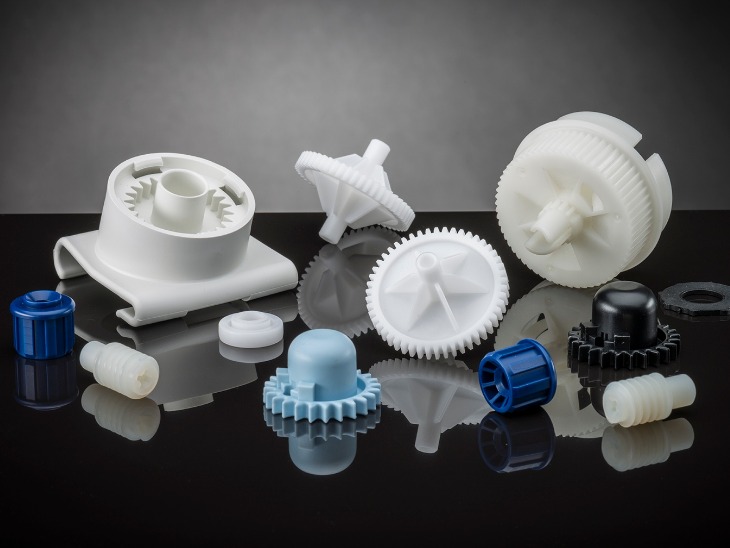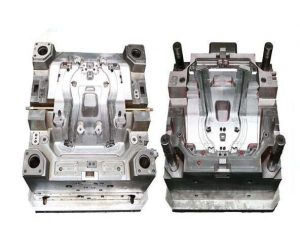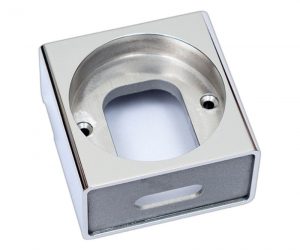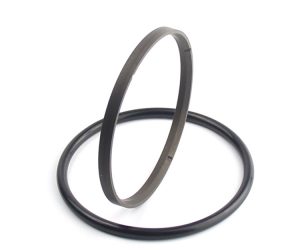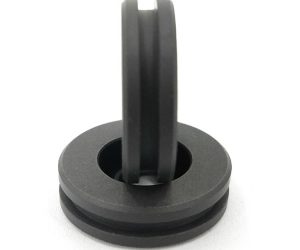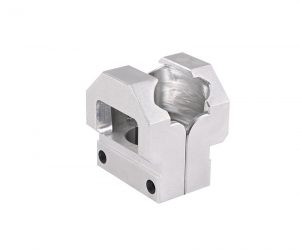This treatise delves into the multifaceted advantages, diverse applications, and intricate operational procedures of multi-shot injection molding (MSIM), a sophisticated manufacturing process that has revolutionized numerous industries. Its efficacy in enhancing production efficiency and mitigating costs is undeniable, yet a nuanced understanding of its complexities is crucial for successful implementation.
Unveiling the Advantages: Beyond Mere Efficiency
While the increased production efficiency of MSIM compared to its single-shot counterpart is readily apparent – the shortened cycle times and amplified output are demonstrably superior – the advantages extend far beyond this superficial observation. The capacity to fabricate intricately complex geometries, previously unattainable through traditional methods, unlocks unprecedented design flexibility. This translates to products with enhanced functionality, aesthetics, and durability, offering a significant competitive edge. The inherent ability to integrate diverse materials within a single component further amplifies this advantage, enabling the creation of parts with tailored properties and functionalities. This synergistic material integration often surpasses the capabilities of post-assembly processes, resulting in improved structural integrity and reduced assembly costs.
Cost Optimization: A Multifaceted Approach
The cost-reduction benefits of MSIM are not solely attributable to reduced mold usage. While the consolidation of multiple injection cycles into a single mold demonstrably minimizes tooling expenses, the true cost savings arise from a confluence of factors. Minimized material waste, stemming from the precise injection process, contributes significantly. Furthermore, the streamlined production process reduces labor costs and minimizes the risk of defects associated with multiple assembly steps. The long-term impact on inventory management, due to the enhanced efficiency, also contributes to overall cost optimization, making MSIM a compelling investment for high-volume production.
Applications: A Panoramic View Across Industries
The versatility of MSIM is reflected in its broad application across diverse sectors. While its use in automotive manufacturing (dashboards, door panels, complex interior components), home appliances (refrigerator liners, sophisticated control panels), and medical devices (syringes, intricate surgical instruments) is well-established, its potential extends far beyond these traditional domains. Emerging applications in advanced electronics (high-precision connectors, integrated circuit packaging), aerospace (lightweight, high-strength components), and even personalized medicine (customized drug delivery systems) highlight the technology's transformative potential. The ability to integrate conductive, insulating, and biocompatible materials within a single component opens doors to previously unimaginable design possibilities.
Operational Intricacies: A Symphony of Precision
The operational process of MSIM is a precisely choreographed sequence of events. The selection of appropriate molds and materials is paramount, requiring a deep understanding of material compatibility, thermal properties, and the desired final product characteristics. The precise control of melt temperature, injection pressure, and cooling cycles is critical to achieving the desired part geometry and material properties. Furthermore, the synchronization of multiple injection sequences requires sophisticated control systems and meticulous process monitoring to ensure consistent quality and prevent defects. Post-processing steps, including deburring, painting, and surface finishing, may be necessary to achieve the final product specifications, depending on the application and material choices. The mastery of these intricate operational parameters is the key to unlocking the full potential of MSIM.
Introduction
Injection molding is a common way to make plastic parts. It works by squirting melted plastic into a mold, where it cools down and hardens into the right shape. But sometimes, one type of material or color isn't enough for what we need. That's when multi-shot injection molding comes in handy.
Multi-shot injection molding lets us use two or more kinds of plastic or colors in the same mold at the same time or one after the other. This can also mix different materials like metals with plastics. It helps create parts that are not only functional but also look good and work better.
What is Multi-Shot Injection Molding?
Multi-shot injection molding is also known as two-shot injection molding, dual-shot injection molding, overmolding, or multi-component injection molding. It is a collective term that refers to an injection molding process where two or more materials are molded in the same molding machine and within the same molding process. The result is an integrated molded component consisting of multiple materials and substrates.
Multi-shot injection molding can be classified into two types: simultaneous and sequential.
Simultaneous multi-shot injection molding injects two or more materials into the same mold cavity at the same time. This requires a special mold design with multiple gates and runners. The materials must be compatible and have similar melting temperatures and viscosities. Simultaneous multi-shot injection molding can produce parts with uniform distribution of materials and colors.
Sequential multi-shot injection molding injects two or more materials into the same mold cavity one after another. This requires a special mold design with a rotary platen, a slide, or a robotic arm that transfers the molded part from one cavity to another. The materials must have different melting temperatures and viscosities to avoid mixing or bleeding. Sequential multi-shot injection molding can produce parts with distinct layers of materials and colors.
Benefits of Multi-Shot Injection Molding
Multi-shot injection molding offers several advantages over conventional single-shot injection molding, such as:
- Part consolidation: Multi-shot injection molding can reduce the number of parts and components in a product assembly, which simplifies the design and lowers the manufacturing cost.
- Production efficiency: Multi-shot injection molding can eliminate the need for secondary operations such as painting, coating, welding, gluing, or fastening, which saves time and labor.
- Improved quality: Multi-shot injection molding can enhance the functionality and durability of the parts by creating strong chemical bonds between different materials and substrates. It can also improve the appearance and appeal of the parts by creating smooth transitions and contrasts between colors and textures.
- Design flexibility: Multi-shot injection molding can enable the creation of complex, intricate, and customized parts with multiple features and properties that cannot be achieved by single-shot injection molding.
Applications of Multi-Shot Injection Molding
Multi-shot injection molding, also known as two-shot or multi-component injection molding, is a versatile manufacturing process that allows the production of complex plastic parts with multiple materials or colors in a single molding cycle. This innovative technique offers a wide range of applications across various industries, enhancing product design, functionality, and aesthetics.
One of the primary applications of multi-shot injection molding is in the automotive industry. The ability to combine different materials and colors in one molding process enables the production of automotive components with improved functionality and visual appeal. For example, soft-touch grips with integrated hard plastic buttons, or dual-color automotive interior components like steering wheel inserts, shift knobs, and control panels, can be efficiently manufactured using multi-shot injection molding. These components not only enhance the overall look and feel of the vehicle's interior but also improve user experience and functionality.
In the medical industry, multi-shot injection molding finds applications in producing devices with advanced features and materials that are crucial for patient care. For instance, multi-component medical syringes with soft-grip handles or anti-slip surfaces can be manufactured using this process, providing healthcare professionals with better ergonomics and ease of use during medical procedures. Additionally, medical devices that require a combination of rigid and flexible materials, such as catheters with varying durometers or overmolded connectors, can be efficiently produced using multi-shot injection molding.
Consumer electronics is another sector that benefits from the capabilities of multi-shot injection molding. The process allows for the integration of multiple materials and functionalities in electronic device components, such as smartphone buttons with integrated backlighting or keypads with soft-touch surfaces. Multi-color housings for electronic products can also be achieved through this process, providing manufacturers with the ability to create visually appealing and distinctive designs.
The home appliance industry is another area where multi-shot injection molding has found application. Manufacturers can create products with enhanced functionality and aesthetics, such as overmolded handles with improved grip and comfort for kitchen appliances, or dishwasher racks with soft and durable contact points. The process also facilitates the integration of branding elements or logos directly into the product design, eliminating the need for secondary operations like printing or labeling.
Furthermore, multi-shot injection molding is increasingly utilized in the consumer goods sector to produce products with unique designs and added functionality. This includes dual-color packaging closures, multi-material cosmetic packaging with soft-touch components, and household products with improved ergonomics and tactile features.
In conclusion, multi-shot injection molding is a versatile and valuable manufacturing process that finds applications across a wide range of industries. Its ability to combine multiple materials and colors in one molding cycle enables the production of complex parts with enhanced functionality, aesthetics, and ergonomic features. From automotive components to medical devices, consumer electronics, home appliances, and consumer goods, multi-shot injection molding continues to drive innovation and elevate product design in various sectors, offering manufacturers a competitive edge in the market.
How Does Multi-Shot Injection Molding Work?
The basic steps of multi-shot injection molding are:
- The first material is injected into the first mold cavity through a nozzle.
- The molded part is transferred to the second mold cavity by a rotary platen, a slide, or a robotic arm.
- The second material is injected into the second mold cavity through another nozzle.
- The molded part is cooled and ejected from the mold.
The process can be repeated for more than two materials or colors by using additional mold cavities and nozzles.
The key factors that affect the quality and performance of multi-shot injection molding are:
- Material selection: The materials used for multi-shot injection molding must be compatible and have similar shrinkage rates, thermal expansion coefficients, and mechanical properties. They must also have different melting temperatures and viscosities to avoid mixing or bleeding during the molding process.
- Mold design: The mold design for multi-shot injection molding must have multiple cavities, gates, and runners to accommodate the different materials and colors. The mold must also have a mechanism to transfer the molded part from one cavity to another, such as a rotary platen, a slide, or a robotic arm. The mold must also have proper cooling and venting systems to ensure uniform temperature and pressure distribution.
- Process parameters: The process parameters for multi-shot injection molding must be optimized to ensure the proper flow, filling, packing, cooling, and bonding of the different materials and colors. The parameters include injection speed, pressure, temperature, time, and sequence.
Conclusion
Multi-shot injection molding is a versatile and efficient manufacturing process that can produce complex, functional, and attractive parts with multiple materials and colors in a single operation. It can offer benefits such as part consolidation, production efficiency, improved quality, and design flexibility. It can be used for various industries and applications that require acoustic or vibration dampening, multi-color or multi-material apparatuses, rigid parts with soft grips, flexible hinges, movable segments, seals, shock absorbers, etc.
If you are interested in learning more about multi-shot injection molding or need help with your next project, contact us today. We have extensive experience and expertise in designing and building high-quality molds for multi-shot injection molding for a wide range of applications.
